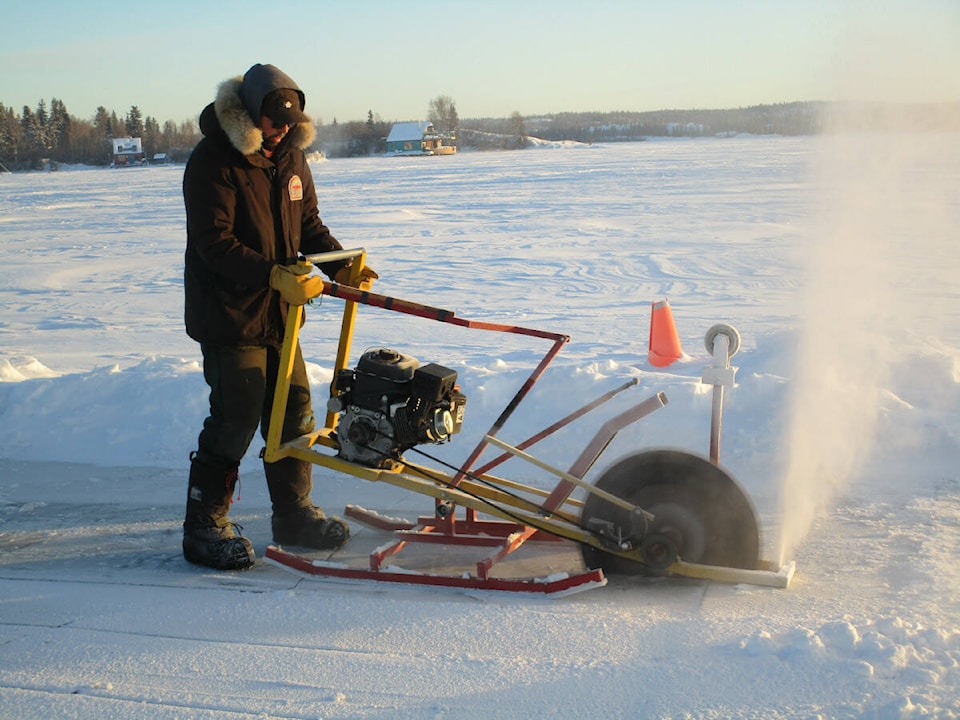On Wednesday morning, I went onto the frozen Yellowknife Bay to see Tony Foliot, the Snow King, so I could learn about the snow castle that he builds every year.
The previous day, I reached out to him to requesting an interview so I could write about his experiences. He said my questions were the ones he’s typically asked every year by journalists. Clearly he was none too keen on having the type of interview I’ve come to expect. He’s been asked the same questions for far too long.
When I arrived and after we shared introductions, he walked straight onto the ice to get to work. I followed him and he said to me, “Two months, 10 guys, because it’s fun.” He gave me the answers to the questions I texted him the day before in about ten seconds flat, then asked me if I was going to do any work.
I immediately got the impression that Foliot was a no-nonsense kind of guy. He wasn’t being rude, he just knew from experience that excellence comes at a price. If I was going to have a story, I was going to have to get my hands dirty, or rather frozen. It was around -30 C that morning.
On-site, everyone had an amusing nickname. Some of those included Foliot himself, the ‘Snow King’; Ryan McCord, ‘Joe Snow’; Anthony Ellendt, ‘Pour Johnny.’
My nickname was ‘Cadet Jonathan.’ Everyone new is called Cadet.
On the ice was a custom built power saw that Foliot called, “King Joe Snow’s Monster Saw He Built.”
The custom power saw was made to cut deep lines through the ice, forming a checkerboard pattern. Afterward, the blocks of ice were cut out completely with a vintage ice saw, which is very long compared to a hand saw you would use to cut through wood.
Once the ice was freed, Foliot used vintage ice tongs, much larger than the tongs used to flip a steak on a barbecue, to pull the large blocks of ice out of the water. I thought I would make myself useful by helping to lift the ice with another set of tongs laying on the ground nearby. Foliot stopped me before I was able to touch anything. According to him, I had to work up to that level. Apparently, I hadn’t earned the right to use the tool as though it were used for some sacred purpose.
Ironically, the first blocks of ice he was pulling from the water were called ‘sacrifices.’ I imagined the Snow King ritually offering the first blocks of ice on an altar, like ancient Hebrews would sacrifice the first of their harvests. In reality, the sacrifices were too small and disfigured to be used as foundational building blocks.
Once the ice was on the ground, the freezing slush was scraped off the blocks of ice so it wouldn’t blemish its naturally smooth form.
Two-wheel dollies were used to transport the blocks of ice nearby, which were then placed onto rows of two-by-fours to keep the blocks from freezing to the ground.
I spent most of the day transporting the blocks of ice but helped with other activities where I could, like shovelling slush or stacking blocks.
From my participation and watching the others work, I got a fairly good idea of the hard work the staff and volunteers put into the project. They’re out on the ice in November, and plan to build every day from December through February to prepare for the castle’s public reveal in March.
After my day of work, I received a book written about the snow castle as a gift, and I had my experiences that I will carry with me forever.
Tony Foliot, you are an inspiration. Thank you for encouraging me to do my best work and for serving the community year after year. Long live the king.
